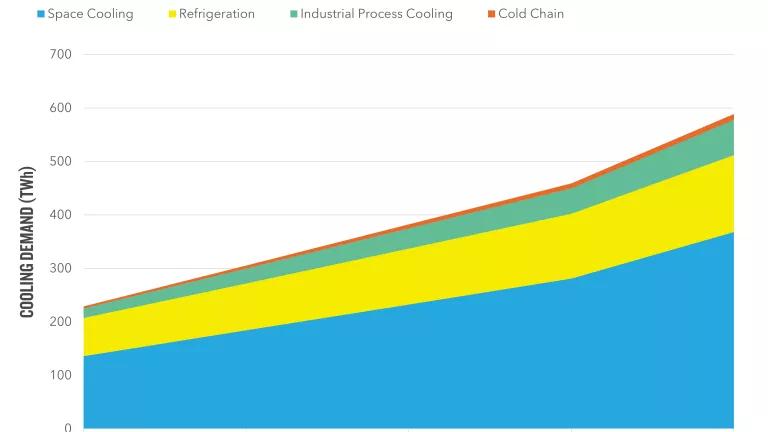The Ordinary Ceiling Fan May Be an Extraordinary Cooling Solution
The ordinary ceiling fan, ubiquitous in Indian homes, may be a unique opportunity to bring energy efficient cooling solutions to many people in India.

A ceiling-mounted fan inside a home, shot during a Cool Roof Visit in India, February 2020
NRDC
This blog was cowritten with Ashish Jindal of NRDC India
For more than 1 billion people in India, ceiling fans are the primary way to keep cool during scorching hot summers, particularly in rural or low-income areas where affordability is the ultimate decider. While only about 6-8% of households have air conditioners, over 90% of Indian households use ceiling fans for cooling & ventilation. With annual sales of 44 million units, this ubiquitous household appliance has unique potential to provide essential cooling, energy savings, and support India’s clean energy goals.
Ceiling fans, in aggregate, have a large energy footprint, accounting for around 40% of India’s residential electricity consumption. There are high efficiency fans, which use BrushLess Direct Current (BLDC) technology to use only 30W of power as compared to the conventional 70W, but they are more expensive and make up less than 15% of the market share.
As part of India’s goal to promote sustainable development and reduce emissions, India aims to double the rate of energy efficiency by 2030. Increasing high efficiency ceiling fan adoption could help achieve this goal. To help increase high efficiency ceiling fan adoption, it will be essential to address four key factors as summarized below.

Data from CEEW, IEA and CLASP suggest that the growing the energy efficient ceiling fan market could result in large energy savings
Factors Affecting Efficient Ceiling Fan Adoption
1) Cost Sensitivity: While energy-efficient ceiling fans offer long-term savings on electricity bills, they typically have higher upfront costs, which act as a barrier to adoption, particularly for lower-income households. BLDC motor technology manufacturers are currently reliant on imported motors and semiconductors, which add to the cost.
2) Awareness and Education: Many consumers are not aware of the benefits of highly efficient ceiling fans or do not understand how fans can provide energy savings. Educating consumers about the long-term cost savings and environmental benefits of energy-efficient appliances is crucial for increasing adoption.
3) Quality Standards: The ceiling fan market is disaggregated and dominated by many small manufacturers who often do not adhere to quality standards. Building trust in the reliability and performance of high efficiency ceiling fans through component level standards and product demonstrations could help.
4) Distribution and Availability: Energy-efficient ceiling fans are not readily available in all parts of India, especially in rural areas. Working with industry, consumers and government representatives on increasing distribution and reach of these appliances will be key to improving adoption.
To find solutions to these challenges, NRDC is working with experts and industry representatives to increase the share of affordable, locally-manufactured, high efficiency ceiling fans by 2030. Through in-depth industry interviews, research, and analysis, we have developed a roadmap for technological evolution of the ceiling fan market. In early September, we will publish our research and work with key stakeholders to jointly develop a market transformation program for ceiling fans in India.




